Journal of the NACAA
ISSN 2158-9429
Volume 5, Issue 2 - December, 2012
Community-Scale Disconnection of Impervious Surfaces in Suburban New Jersey
- Rector, P., County Environmental Resource Mgmt Agent, Rutgers Cooperative Extension
Obropta, C.C., Extension Specialist in Water Resources, Rutgers Cooperative Extension, Rutgers University
Pearson, B., Program Associate in Water Resources, Rutgers Cooperative Extension, Rutgers University
ABSTRACT
A Source Loading and Management Model (WinSLAMM) was used to estimate the runoff that could be disconnected in two neighborhoods in the Peters Brook Watershed, Somerset Co., NJ., through residential rain barrel use. The modeling allowed the determination of a target number of homes to install rain barrels and a goal for stormwater reduction. Four community-centric rain barrel workshops were conducted in an informal manner with the focus on the Peters Brook, and a tributary, Ross’ Brook during the summer of 2010. The project investigated the installation of rain barrels as a changed behavior, utilizing follow up surveys conducted (Nov. 2010, June 2011). The project was able to cross jurisdictional boundaries providing workshops in three municipalities by focusing on the Peters Brook sub-catchment level, a watershed that is approximately 10 square miles. Based on the surveys the installation rate for the Peters Brook watershed was 91%, which is higher than the statewide installation rate (71% Bakacs et al.). When results were broken down to individual neighborhoods the results were slightly lower than the statewide regional average (69%), potentially due to small sample numbers.
Introduction
Located in Central New Jersey, the Peters Brook Watershed (Figure 1) is 10 square miles; characterized by urban land uses, primarily medium density residential but also including commercial and transportation (a two lane highway divides the headwaters from main channel). Peters Brook has been identified as being impaired for fecal coliform, aquatic life, phosphorus and pH; and currently has an approved Total Maximum Daily Load (TMDL) for fecal coliform. Nonpoint source pollution from increased runoff volumes from older, dense urban development with minimal stormwater management is suspected to be the primary source of the impairments (NJDEP 2003).
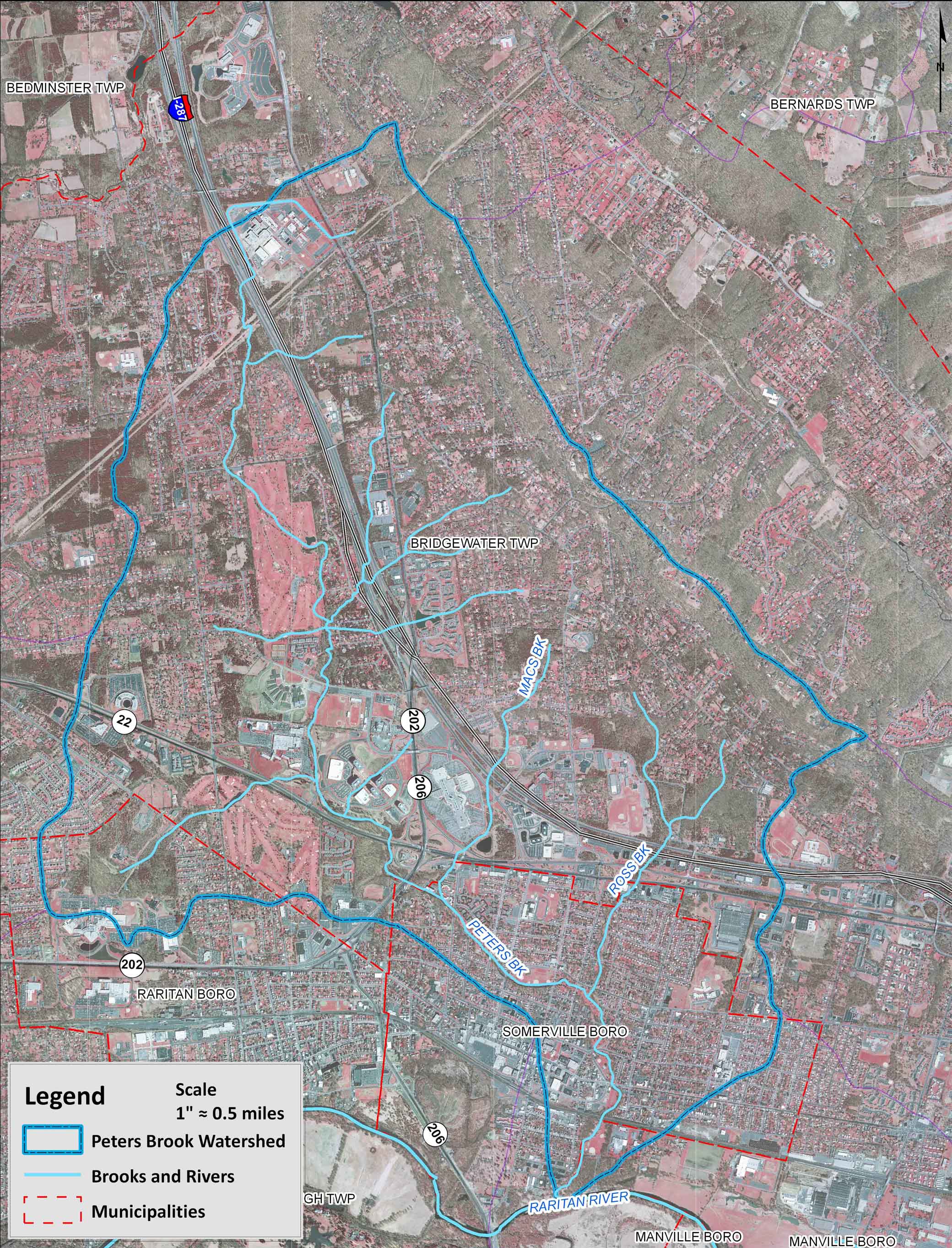
Figure 1. Peter's Brook Watershed in Somerset County, New Jersey.
The goal of this project was to reduce runoff volumes in Peters Brook Watershed through rainwater harvesting and disconnection of impervious surfaces. The Source Loading and Management Model (WinSLAMM) model was created for two neighborhoods within the watershed to determine the possible runoff volume reductions in the watershed that could be obtained from rainwater harvesting and disconnection. The model was used to estimate the reduction in stormwater volume to the stream for various scenarios of resident participation in the rainwater harvesting program. These results were used to set a target for the level of participation in the program. A community-wide rainwater harvesting program was then offered to homeowners to determine if the targeted participation rate could be achieved.
Project Objectives
The project had two objectives:
- To identify a target for homeowner participation in a community-wide rainwater harvesting and disconnection program using WinSLAMM, and
- To determine if this target could be achieved by delivering a rain barrel program at the neighborhood scale.
Methods and Results
WinSLAMM Modeling
WinSLAMM, or Storm Loading and Management Model for Windows, is a modeling program frequently used as a planning tool, to better understand sources of urban runoff pollutants and their control. It allows a user to create a sub-catchment and characterize its source areas, such as driveways, roofs, sidewalks, landscaped areas, and undeveloped areas, along with soil type. Rain events are simulated in WinSLAMM and runoff volumes from each source area are calculated. Stormwater best management practices (BMPs) also can be modeled in WinSLAMM to determine runoff volume reductions that would result from various BMP implementation.
For this study, it was assumed that roadways and driveways were directly connected impervious surfaces, which means they drain directly to the storm sewer system and then into Peters Brook (Somerville) and Ross’ Brook tributary (Bridgewater). Rain barrels were modeled as biofiltration devices with a total storage capacity of 50 gallons. It was assumed that each barrel was emptied when full. Ideally each barrel would be emptied prior to a rainstorm but WinSLAMM does not model the stored runoff in such a manner.
Individual models were developed for two neighborhoods in the Peters Brook Watershed (Figure 2): the Bridgewater neighborhood (Figure 3) and the Somerville neighborhood (Figure 4). ArcGIS aerial imagery was used to determine the area of each roof, driveway, street, and sidewalk (Tables 1 and 2). For each modeled neighborhood, the default Runoff Coefficient File was used to ensure consistency. Each neighborhood was modeled using rainfall data from Newark International Airport; 1994 data was chosen because it represents an average year of precipitation of approximately 42.5 inches. Only one storm was over two inches in rainfall.
All models were run between April and October, when rain barrels are typically installed and being used. Other assumptions include:
- Each rain barrel can hold 50 gallons of water,
- Each rain barrel is emptied prior to each significant storm,
Each home has four downspouts, only one of which was directly connected to an impervious surface and the other are disconnected, and
- Each rain barrel is installed to the directly connected downspout with the overflow from the barrel discharging to a pervious surface.
Three scenarios were modeled with WinSLAMM. The first scenario was the baseline, which assumed no rain barrels, one-quarter of the roofs directly connected and three-quarters of the roofs disconnected. This fairly accurately describes the existing conditions in the study areas. The second scenario assumed 10% of the houses in each neighborhood will have rain barrels that overflow onto a pervious area. Other houses (90%) will remain one-quarter connected and three-quarters overflow onto a pervious area. The third scenario assumed 100% of the houses in each neighborhood will have rain barrels and overflow onto a pervious area.
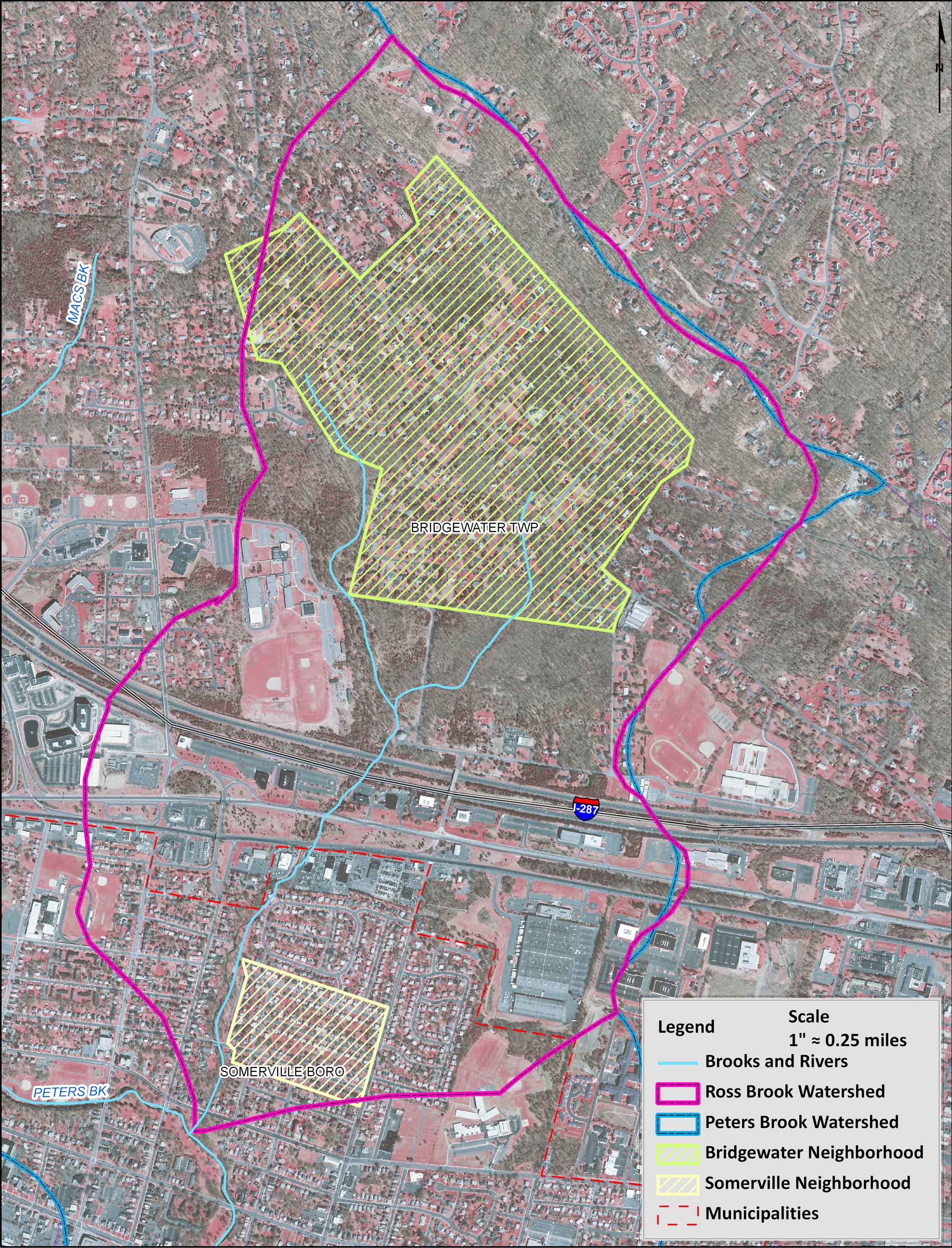
Figure 2. Peters Brook Watershed with Two Study Catchments Delineated.
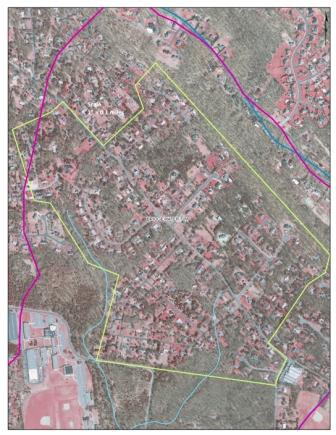
Figure 3. Aerial view Bridgewater Township Study Catchment.
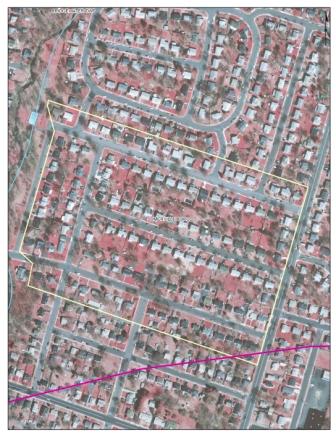
Figure 4. Aerial view the Borough of Somerville study catchment.
|
Bridgewater |
||
|
|
Square Feet |
Acres |
|
Watershed |
11,823,340 |
271.43 |
|
Roofs |
512,645 |
11.77 |
|
Driveways |
558,865 |
12.83 |
|
Streets |
556,259 |
12.77 |
|
Sidewalks |
22,069 |
0.51 |
|
Pervious |
10,173,503 |
233.55 |
Table 1. Bridgewater “Neighborhood” land use.
|
Somerville |
||
|
|
Square Feet |
Acres |
|
Watershed |
570,029 |
13.09 |
|
Roofs |
80,395 |
1.85 |
|
Driveways |
26,438 |
0.61 |
|
Streets |
61,103 |
1.40 |
|
Sidewalks |
16,977 |
0.39 |
|
Pervious |
385,115 |
8.84 |
Table 2. Somerville “Neighborhood” land use.
|
|
Somerville |
Bridgewater |
||
|
Scenario |
Roof Runoff |
Reduction of Baseline |
Roof Runoff |
Reduction of Baseline |
|
|
cubic feet |
% |
cubic feet |
% |
|
|
|
|
|
|
|
1.Baseline |
75,300 |
- |
298,576 |
- |
|
Disconnection and Rain Barrels |
||||
|
2. 10% |
52,737 |
30 |
221,046 |
26 |
|
3. 100% |
23,729 |
68 |
101,091 |
66 |
Table 3. Runoff Reductions for Three Different Scenarios
Although the lot sizes in Bridgewater were larger allowing for more absorption of the disconnected runoff, Bridgewater had larger roofs generating more runoff. The results indicate that the increase in lot size was not substantial enough to compensate for the larger roof size. Therefore, the percent runoff reduction was higher in Somerville.
Rain Barrel Workshops
Four educational rain barrel workshops were conducted during the summer of 2010 (June 10, Aug. 19, Aug. 26 and Aug. 28, 2010) to provide homeowners with information on stormwater runoff, erosion, and water conservation. Three neighborhoods were selected based on several factors including: proximity to Peters Brook, or its tributary, Ross’ Brook; neighborhoods with a storm sewer system draining to the stream through one (1) outlet; and homes of similar type (age and lot size). Rainwater harvesting techniques and homeowner solutions such as installation of rain barrels and rain gardens were presented, culminating in the participants building their own rain barrel for use at home. The workshops were conducted in partnership with New Jersey Water Supply Authority (NJSWA) Watershed Protection Unit (http://www.raritanbasin.org). The cost of the barrels was subsidized by a grant from the New Jersey Water Resources Research Institute (NJWRRI) grant and funding from NJWSA funding, allowing residents to pay $20/barrel.
Eighty-nine residents participated; 98 barrels were built, several residents built two barrels. Results regarding installation and additional questions were obtained through a follow up survey conducted via e-mail or telephone three months after the final workshop and again in the early summer of 2011. The survey focused on installation, the respondent’s willingness to consider additional rain barrels and the type of area that had been disconnected. The majority of the participants lived within the Peters Brook watershed (76%). Response rates varied from 38% in 2010 to 24% for the 2011 survey. Installation ranged from 69% for the identified neighborhoods to 91% for the entire watershed (Table 4, Fig. 5). 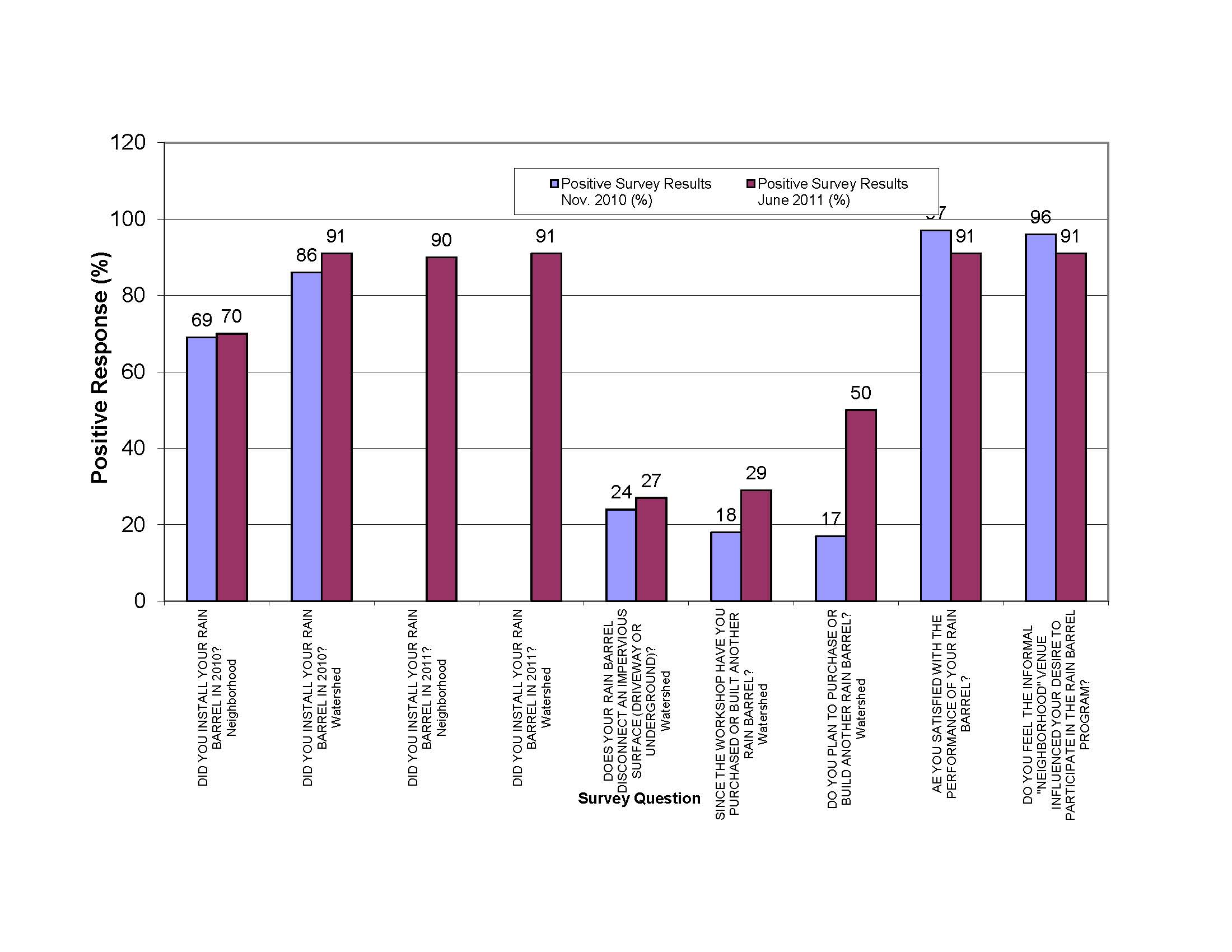
Figure 5. Survey results from November 2010 and June 2011(%).
A conservative estimate of the amount of water conserved from the four Rain Barrel workshops based on the installation rates from the surveys conducted in the Peters Brook watershed are greater than 9,000 gallons for every 1.25 inch rain event. The average residential roof size in the Peter’s Brook watershed is 1,500 ft2 (O’Neil pers. comm.) and an 800 ft2 roofs (Bakacs and Haberland, 2010) will drain approximately 600 gallons during a 1.25 inch storm (Bakacs and Haberland, 2010).
For both surveys the downspout disconnection that originally drained to the lawn was the predominant type of disconnection in both the 2010 and 2011 surveys (77% and 72% respectively). For both surveys the respondents were satisfied with their rain barrels (97% and 96%) and also felt the informal venue influenced their decision to attend the workshop (>90%). Respondents also changed behavior by purchasing or building additional barrels in 2010 (11%) and 2011 (14% respectively).
|
Survey Question |
Responses from November 2010 Survey (n = 28) |
Responses from June 2011 Survey (n = 21) |
||
|
Did you install your Rain Barrel in 2010? |
Neighborhood Only (n = 12) |
Yes = 69% |
Neighborhood Only (n=10) |
Yes = 70% |
|
Entire Watershed (n = 28) |
Yes = 86% |
Entire Watershed (n = 21) |
Yes = 91% |
|
|
Did you install your Rain Barrel in 2011? |
N/A |
Neighborhood Only (n = 10) |
Yes = 90% |
|
|
Entire Watershed (n = 21) |
Yes = 91% |
|||
|
Does the Rain Barrel disconnect impervious surface (driveway or underground)? |
Entire Watershed Yes = 24% |
Entire Watershed Yes = 27% |
||
|
Since the workshop have you purchased or built another Rain Barrel? |
Neighborhood Only |
Yes = 25% |
Neighborhood Only |
Yes = 30% |
|
Entire Watershed |
Yes = 18% |
Entire Watershed |
Yes = 29% |
|
|
Do you plan to purchase or build another Rain Barrel? |
Entire Watershed Yes = 17% |
Entire Watershed Yes = 50% |
||
|
Are you satisfied with the performance of your rain barrel? |
Entire Watershed Yes = 97% |
Entire Watershed Yes = 96% |
||
|
Did you feel the informal “neighborhood” venue influenced your desire to participate in the rain barrel program? |
Entire Watershed Yes = 96% |
Entire Watershed Yes = 91% |
||
Table 4. Survey Results November 2010 and June 2011.
Discussion
The modeling of the two neighborhoods predicted that 10% participation in the rain barrel program with the overflow disconnected could yield 27% to 30% reduction in stormwater runoff volumes if the original downspout was directly connected. The post workshop survey provided an opportunity to determine if it is feasible to promote this behavior change. The results indicate that the neighborhood venue seemed to provide high installation rates, but 77% of the participants diverted downspouts that were already disconnected to lawn or garden to their new rain barrels, limiting the effectiveness to manage stormwater. This data, although disheartening, is critical, both for modeling purposes and educational direction.This data also prompted New Jersey Water Supply Authority to offer rebates for constructed rain barrels that might be more aesthetically pleasing in the front yard where greater disconnection of impervious surfaces would be achieved.
These workshops also provided an opportunity to determine if smaller neighborhood workshops resulted in a higher adoption rate than larger regional workshops. Survey results remained similar with the focused neighborhood installation rates (69%) close to the New Jersey regional installation rates (71%) as reported by Bakacs et al. (2010). When the survey was evaluated with respect to residents within the entire Peters Brook watershed, the installation rate is more positive. The installation rate for residents within the Peters Brook watershed based on the 2010 survey was 87% and the 2011 follow up survey was 91% for the entire watershed (Fig. 5). Each rain barrel workshop was a community event, tightly allied with the stream, the park and the community.
The hypothesis was that the installation rates in the “neighborhoods” would be higher in the neighborhood. We did achieve the 10% participation rate we were hoping to achieve, but the installation rate was not as high as anticipated. There were only 17 participants from the Somerville neighborhood (130 homes) and 10 responses to the 2010 survey. This may have been too small a sample to be representative. Individual responses such as: “regrading and would install the following spring”, “had a technical problem and would install next spring”, and one who gave the barrel away to a friend may also have provided undue weight with such a small sample. It may also be that attempting to rigidly focus on a select few homes based on proximity to a catch basin creates too small of a sampling pool.
It appears the spatial extent for evaluation at the sub-catchment level was large enough to overcome the statistical issues of a small sample described above and to have a sufficient pool to draw from, while maintaining the community connection to the stream. There may be a certain community scale at which the goal of adoption of practices can best be achieved and this investigation may have helped highlight that level of scale. There appeared to be a greater adoption rate of BMPs when educational outreach is focused and community orientated compared to the statewide average for general audience workshops. Dietz et al. (2004) found “Intensive education efforts, in the form of workshops and one-on-one consulting, resulted in a significant adoption of BMPs…”
When water quality and stormwater BMPs are implemented on an individual and voluntary basis, education of residents is a critical aspect of the program. Another significant response was that both the 2010 and 2011 survey respondents felt the neighborhood venue influenced their desire to participate in the program (96% and 90% respectively). Although for many organizations there is a desire to reach even greater numbers of people, especially with the aid of social media avenues such as Facebook and Linkedin, this project found that a more intimate, casual outreach program with a specific community focus achieved higher rates for installation of rain barrels within the watershed than more general workshops that focus on rain barrels but without the community aspect to the programs.
This program provided a second year of data on installation and similar to work conducted on Nine Mile Run, adoption of additional BMPs continued after the initial installation (3RWWI 2005). This is an important component of the survey as adoption is connected with change of behavior and a successive installation (attaching again after removal for winter) indicates a behavior that goes beyond the initial thrill of the new rain barrel.
Conclusion
WinSLAMM is a tool that can help establish targets for adoption rates within a watershed as well as prioritize neighborhoods for outreach programming. Evaluations from follow-up surveys have indicated areas of success and concern in the Neighborhood Rain Barrel Workshop Program in the Peters Brook watershed. The findings have been utilized in educational rain barrel workshops conducted in the summer of 2011. It is imperative to determine what is working and what is not working when trying to achieve a target, as assumptions on behavior change based on education outreach may be misleading. The intimate, yet casual setting for the workshops held as part of this community-wide rainwater harvesting program were found to be the most effective means to engage homeowners in participation and implementation of BMPs.
References
3 Rivers Wet Weather, Inc (3RWWI). (2005). Nine Mile Run Rain Barrel Initiative Final Report. 3 Rivers Wet Weather, Inc. Pittsburgh, PA.
Bakacs, M., & Haberland, M. Rain Barrels Part II: Installation and Use (FS1118). Rutgers, The State University of New Jersey, New Jersey Agricultural Experiment Station. (2010). New Brunswick, NJ.
Bakacs, M., Muscia, C., Haberland, M., Rector, P., Mangiafico, S., Carleo, J., Obropta, C., Mellor, S., & Boyajian, A. (2011). Engaging the Public in Water Resource Issues through Rainwater Harvesting. Land Grant and Sea Grant National Water Conference. January 31-February 2, 2011. Washington, D.C. Published Abstract.
Booth, D.B., Karr, J.R., Schauman, S., Konrad, C.P., Morley, S.A., Larson, M.G., & Burges, S.J. (2004). Reviving Urban Streams: Land Use, Hydrology, Biology and Human Behavior. Journal of American Water Resources. 40(5), 1351-1364.
Dietz, M.E., Clausen, J.C., & Filchak, K.K. (2004). Education and Changes in Residential Non Point Source Pollution. Environmental Management. 34(5), 684-690.
New Jersey Department of Environmental Protection. (2003). Amendment to the Lower Raritan/Middlesex Water Quality Management Plan, Mercer County Water Quality Management Plan, Northeast Water Quality Management Plan, Upper Raritan Water Quality Management Plan, and Sussex County Water Quality Management Plan. Total Maximum Daily Loads for Fecal Coliform to Address 48 Streams in the Raritan Water Region. New Jersey Department of Environmental Protection. Trenton, New Jersey. pp. 81.
O’Neil, R. 2010. New Jersey Water Supply Authority, Professional Planner, Principal Watershed protection Specialist. personal communication.
